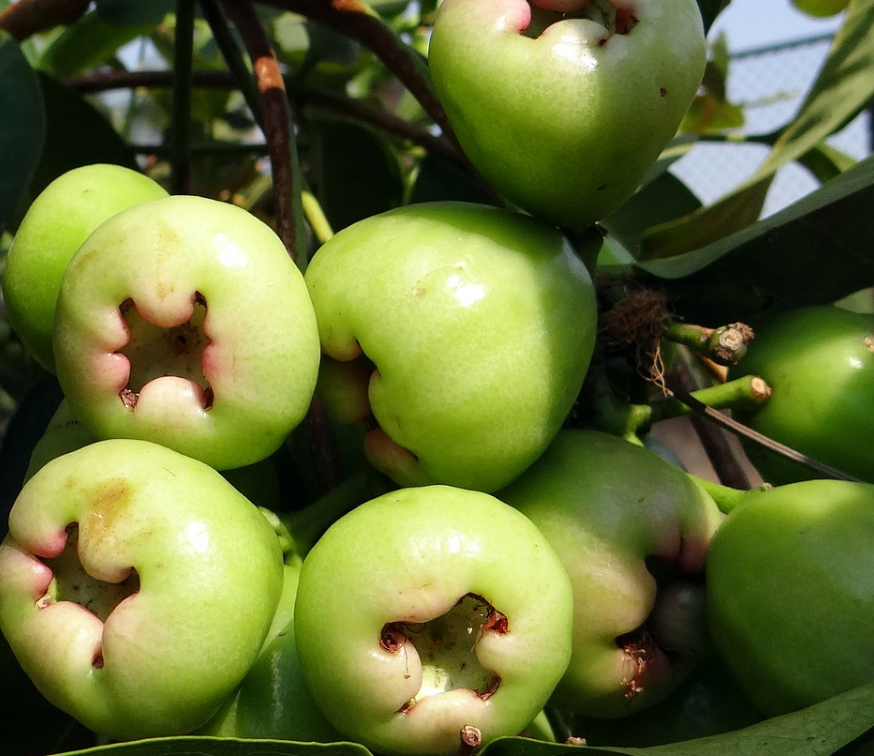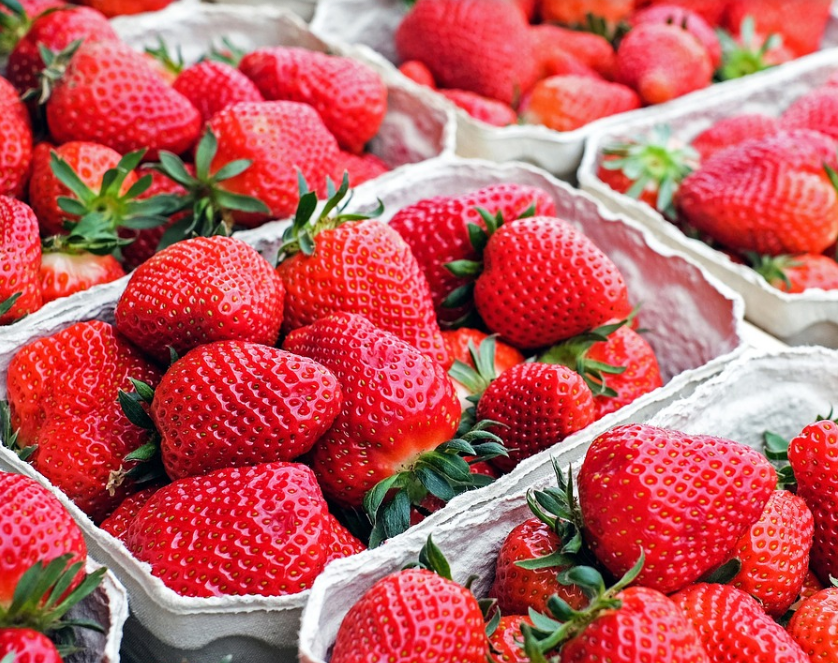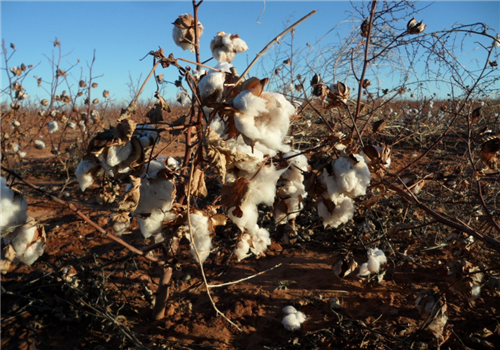How much is the lotus flower per kilogram? How to plant it? What if it doesn't blossom and bear fruit? (common planting varieties are attached)
Lotus is a tropical and subtropical fruit, originating in Malaysia, Taiwan and Hainan, etc., is a famous fruit in the original area. In recent years, with the introduction of lotus fog into inland cities in China, more and more people have paid attention to it, and its price is also very jealous. One kilogram of lotus fog can reach 60 or even hundreds of yuan. Many people rushed to plant, but after all, it was a fruit that lived in the tropics, and it was not easy to plant. So how do you grow wax apples? What if it doesn't bear fruit? What varieties do you have?
How do I grow wax apples?
1. Seedling
Wax lotus planting first needs to be carried out seedlings, there are three ways of wax lotus seedlings, layering, cuttage and grafting. At present, the main seedling methods are layering and grafting. The layering should select healthy branches that have grown for at least three years and be carried out under high temperature and rainy weather every summer. First select a good diameter of about 3 cm branches for peeling, and then mix with moist soil and chopped grass to form your ball, with a rope tied up at both ends. After about a month, new roots will grow where they were peeled, and after three months, you can start transplanting. Grafting propagation with 1-2cm seedlings as rootstock, and then with about two years of enriched branches scion, no matter when can be grafted, but in spring and autumn survival rate is relatively high.
2. Construction of gardens
Orchards should be chosen in fertile, deep, moist acidic or neutral soils. Orchard area is large, it is best to set up a pedestrian path in the orchard to facilitate the management during planting, and the irrigation and drainage system in the orchard should be well done to cope with high temperature, drought, water shortage and rainy ponding weather in time. Then, a septic tank and a pool are established outside the orchard for fertilization and watering. If conditions permit, a management system integrating fertilizer and water can be established, which can manage orchards more conveniently and make fruit trees grow better.
3. Land preparation
After the orchard has been established, the soil should be tilled and leveled to remove debris, stones and some grass before transplanting seedlings. After tilling the soil, expose it to the sun for a week to disinfect the soil to reduce germs and parasites, and then level the soil. If the orchard is established on a hillside, it cannot be planted directly with a pull line when planting lotus mist. The hillside should be built, preferably into a trapezoidal field for later management.
4. Base fertilizer
Planting lotus mist needs to dig holes in the orchard, determine the row spacing according to the size of the plants, and then start digging holes. The distance between holes is generally 1*0.8*0.8 meters. After digging, it will be exposed to the sun for about 30 days. The purpose is the same as above, through the sun's high temperature and ultraviolet rays, will kill bacteria and parasites in the soil, reduce the source of disease. Before planting, base fertilizer is applied, and farm manure, calcium, magnesium and phosphorus fertilizer and compound fertilizer are mixed and stirred together into holes. Then cover it with a layer of rare earths, and it can be planted in three weeks.
5, planting
Planting time is generally selected in spring and autumn, to reasonably control the planting density, according to the size of the tree, generally 4*4m row spacing. To ensure that the tree early yield and survival rate. When the lotus fog production reaches the peak period, the orchard is shaded, and then thinned to maintain the yield per mu at about 20 plants. Ensure the final yield and quality of lotus fog. When planting, it is best to step on the seeds while planting. It is best to pull out the seedlings by hand. However, it is necessary to avoid letting the seedlings touch the base fertilizer to prevent rotten roots and affect the survival rate. If dead seedlings are found, they should be replenished in time.

2. What if the lotus fog does not bear fruit? How to promote flowers and fruits?
1, control tip
Spraying 6000 times solution of 40% ethephon or 200~500 times solution of paclobutrazol 3-4 days before pruning to control shoots and inhibit germination and growth of treetops.
2. Tree pruning
spray ethephon or paclobutrazol before pruning fruit tree, and selecting light, moderate and heavy pruning according to tree growth and development condition and fruit period after spraying so as to increase ventilation and light transmission of tree body;
The light pruning technique operation is: thinning out excessive long branches, back branches, over-dense branches, diseased branches and weak branches, cutting off partial branches and sprouts;
The moderate pruning technique is: thinning out the top branches of the tree body, selecting large branches and strong branches evenly distributed in space, and shortening the fruiting branches according to the growth strength of the branches to retain about 2- 5 cm branches;
Heavy pruning techniques include truncating the main branches except for about 70 percent of the shoots and leaves.
3. Time and method of accelerating flowers
The rush time is from June to November, so that it can be controlled to be listed in October to April of the next year. The specific operations are as follows:
① trunk girdling or strangulation
30-35 days after pruning, when the last shoot is more than 7 years old, strip 1- 2 cm wide closed girdle on the trunk 30cm away from the ground, or strangulate the trunk with iron wire 14-21 days before flowering.
2. Application of paclobutrazol on rhizomes
On the second day after girdling, the soil at the root of fruit trees was irrigated with 200 times solution of 15% paclobutrazol wettable powder, and the dosage was about 2- 4 kg/plant.
③ canopy covering net
After application, fruit trees were covered with shading net with shading rate of 90% for 25-45 days, shading days were more than 35 days from April to August, and shading days were 25-30 days in September.
④ Chemical stimulation
immediately aft removing that net, continuously spray 2-3 times of 48% chlorpyrifos emulsifiable solution 500 times +1.8% Aiduo water collect agent 1200 times +0.5% urea, spraying once every 2-3 days;
Spray time: before 7:00 in the morning or after 18:00 in the evening, spray in cloudy or cloudy weather, spray evenly on the front and back of leaves.
4. Flower and Fruit Management
① Flower thinning
The principle of flower selection: select oblique, lateral or drooping fruit branches, fruit branches on the back, thin and diseased fruit branches should be thinned, one inflorescence per fruit branch, 5-10 flowers per inflorescence.
② Fruit thinning
When the flower withers to the size of the finger of the fruit, the withering stamens are removed, the small fruits, weak fruits, abnormal fruits and diseased fruits are removed, and 3-6 small fruits are selected from a single fruit branch.
③ Bagging
After fruit thinning, spray the whole tree and young fruit with 1000 - 1500 times solution of 50% prochloraz manganese salt WP or 600 - 800 times solution of 64% oxadiazole-manganese zinc WP, or 800 times solution of 70% thiophanate-methyl WP +2000 - 2500 times solution of 20% methomyl EC, or 5000 times solution of 10% imidacloprid EC, or 5000 times solution of 1% abamectin EC. After spraying and sterilizing, special fruit bags were used to bag the ears.
④ Fruit preservation
After flowering to 1 week before fruit picking, spray 50%~ 100,000 times solution of 80% 2,4- D sodium salt water-soluble powder +0.1% potassium dihydrogen phosphate or multi-element foliar fertilizer every 7 days to improve fruit setting rate and prevent fruit dropping.
5 Fruit picking
The fruits begin to turn red 30-50 days after bagging, and can be harvested when the fruits are about 9 years old. When harvesting, use branch shears to cut off the fruit branches from the base together with the fruit bags and put them into baskets before sending them to the packaging field.
5. Fruit grading and packaging
① Classification
After screening out rotten fruit, diseased fruit, cracked fruit and abnormal fruit, the fruit was graded according to the conditions and the weight of single fruit: the weight of superior fruit was more than 110 g; the weight of single fruit of first class fruit was 90~110 g; the weight of single fruit of second class fruit was 75~90 g; the weight of single fruit of substandard fruit was not up to standard.
- Prev

How to grow potted strawberries? Which month is better? What if it doesn't blossom?
Strawberry is one of our favorite fruits, which is rich in vitamins and is of great help to the body. In fact, strawberries can be potted, so how to grow potted strawberries? Which month is better? What if it doesn't blossom? How to grow potted strawberries?
- Next

* * Cotton acreage accounts for 80% of the country, come and see how they achieve high yield?
The total cotton output has ranked first in the country for more than 20 years in a row. The reporter learned from the Academy of Agricultural Sciences that the planting area of cotton reached more than 37 million mu in 2018, accounting for 80% of the country's cotton planting area.
Related
- Fuxing push coffee new agricultural production and marketing class: lack of small-scale processing plants
- Jujube rice field leisure farm deep ploughing Yilan for five years to create a space for organic food and play
- Nongyu Farm-A trial of organic papaya for brave women with advanced technology
- Four points for attention in the prevention and control of diseases and insect pests of edible fungi
- How to add nutrient solution to Edible Fungi
- Is there any good way to control edible fungus mites?
- Open Inoculation Technology of Edible Fungi
- Is there any clever way to use fertilizer for edible fungus in winter?
- What agents are used to kill the pathogens of edible fungi in the mushroom shed?
- Rapid drying of Edible Fungi

